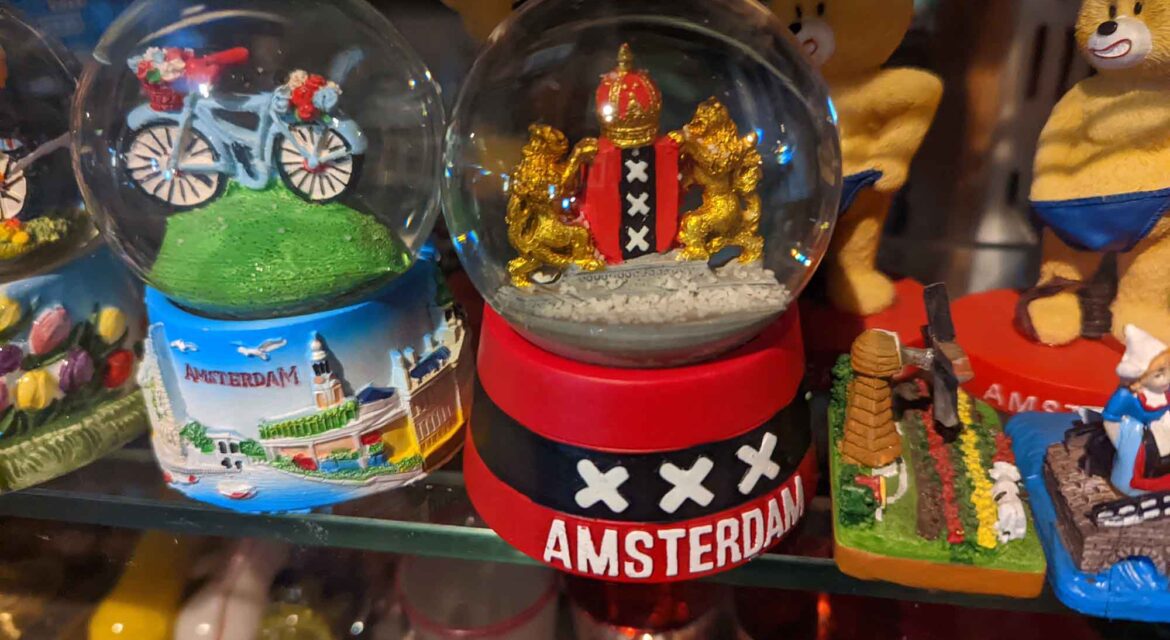 The flag of Amsterdam, the Netherlands, features what looks to be three white X’s on a black stripe that rests on a red background. This incredibly distinctive design can be seen all across the city on actual flags, products for sale and as part of countless advertisements and brands. This ubiquity has allowed it to become an icon that is synonymous with the city itself, showcasing the power that something as simple as a flag can have for individuals, organizations and an entire city.
The flag of Amsterdam, the Netherlands, features what looks to be three white X’s on a black stripe that rests on a red background. This incredibly distinctive design can be seen all across the city on actual flags, products for sale and as part of countless advertisements and brands. This ubiquity has allowed it to become an icon that is synonymous with the city itself, showcasing the power that something as simple as a flag can have for individuals, organizations and an entire city.

Where Myth Meets Legend
 Myths associated with the origin of the XXX that is featured on the coat of arms of Amsterdam range from the city’s association with legal prostitution to the X’s representing fire, floods, and the black plague that Amsterdam survived over the centuries. None of these myths are connected to reality. Additionally, the three crosses do not represent the words of the official motto of Amsterdam, which is, “Heldhaftig, Vastberaden, Barmhartig,” (usually translated as “Valiant, Steadfast, Compassionate”). This motto only dates back to 1947.
Myths associated with the origin of the XXX that is featured on the coat of arms of Amsterdam range from the city’s association with legal prostitution to the X’s representing fire, floods, and the black plague that Amsterdam survived over the centuries. None of these myths are connected to reality. Additionally, the three crosses do not represent the words of the official motto of Amsterdam, which is, “Heldhaftig, Vastberaden, Barmhartig,” (usually translated as “Valiant, Steadfast, Compassionate”). This motto only dates back to 1947.
Some historians believe the imagery and colors of the Flag of Amsterdam can be tied back to a family who once owned a great deal of land around Amsterdam in the 13th century. The actual origins of the X’s are also unknown but these symbols are three vertical Saint Andrew’s Crosses. They appear in various other designs of the Middle Ages and were named after the apostle Andrew who was martyred on an X-shaped cross in the 1st century AD. These three X’s are the centerpiece of Amsterdam’s coat of arms which features them on a black band running down the center of a red shield. This shield is the official symbol of the City of Amsterdam. Flanked by two lions, this symbol defines the full version of the Coat of Arms of Amsterdam. A simplified version of this design defines the Flag of Amsterdam.
This simplified design can be seen all across Amsterdam. Appearing on countless items for sale but also carved into the bricks on buildings and hanging outside of windows as actual flags, the icon is part of the city in ways that are incredibly obvious and subtle. Many have made the design and symbols associated with it their own, with the colors and crosses appearing in countlessly creative ways.
These Flag of Amsterdam design is effectively in the public domain, as the municipalities cannot claim copyright. While there are restrictions on the full coat of arms of Amsterdam, individual elements, such as the three Saint Andrew’s Crosses or the colors of the symbol may be used by others without permission This has created countless opportunities for the Flag of Amsterdam design to be positioned as an icon that resonates in different ways to residents and visitors.
The Flag of Amsterdam has generated interest and opportunity on multiple levels, being utilized for everything from a means of identity to a source of revenue. This traction is based on the strength of a design that is as simple as it is powerful, highlighting what it can mean for the ordinary to become iconic.
Icons That Define a Legacy
 Cities and other institutions around the world have typically static elements like flags that could be used to newly create engagement for residents and visitors. While the Flag of Amsterdam is connected to a history that extends across the centuries, the reason it has become an icon for the city in the present is on account of a look that is the opposite of static. The dynamic design allows people to use and interpret it in their own way, ensuring the icon will continue to evolve while serving as an essential means of engagement and connection.
Cities and other institutions around the world have typically static elements like flags that could be used to newly create engagement for residents and visitors. While the Flag of Amsterdam is connected to a history that extends across the centuries, the reason it has become an icon for the city in the present is on account of a look that is the opposite of static. The dynamic design allows people to use and interpret it in their own way, ensuring the icon will continue to evolve while serving as an essential means of engagement and connection.


